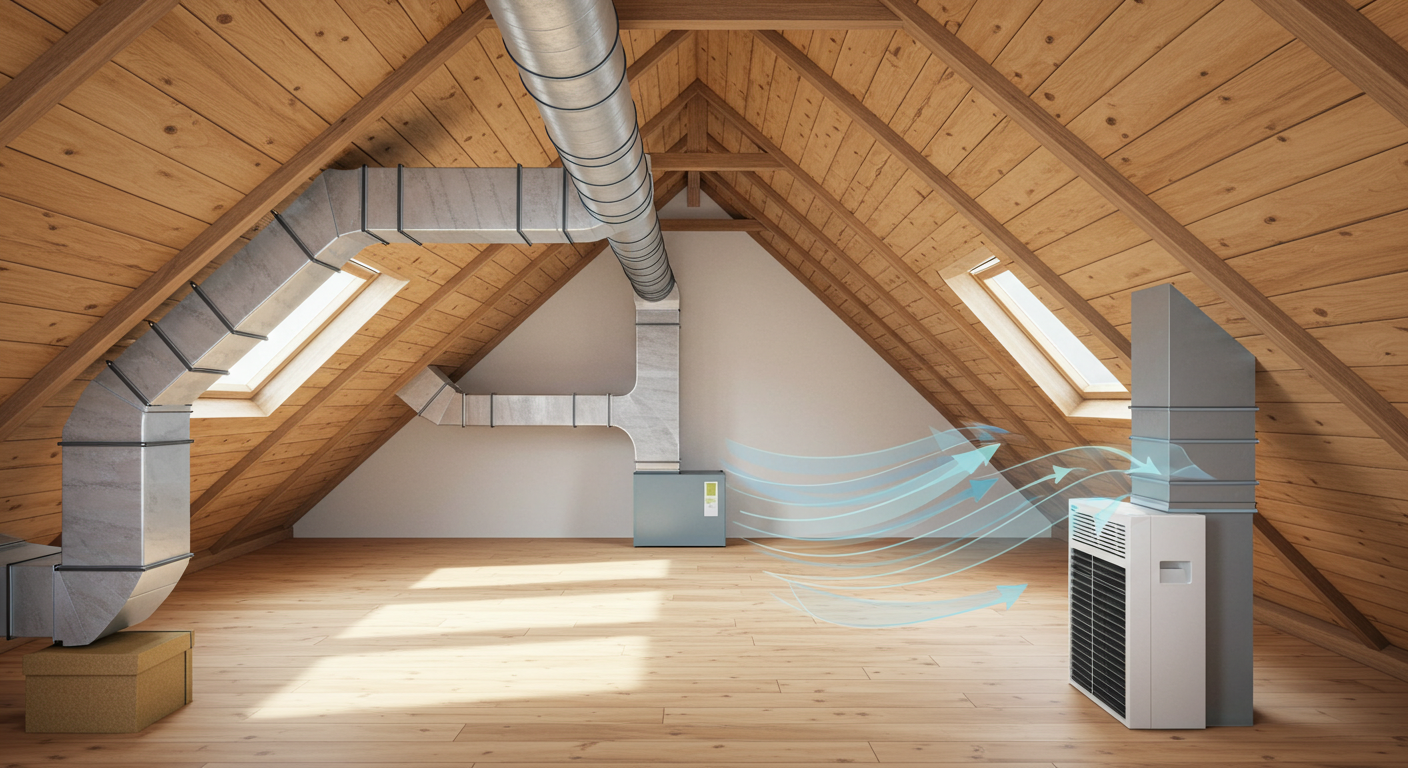How to Troubleshoot a Noisy Air Conditioner
Is your AC making noise? Learn what the sounds mean, how to fix them, and when to call for help.

When you spot water droplets forming on your AC ductwork, it might seem like a small issue — just another annoyance in a humid Texas summer. But condensation on your AC ducts is more than a cosmetic problem. Over time, duct sweating can damage insulation, stain ceilings, drive up energy bills, and worst of all, create the perfect breeding ground for mold inside your HVAC system.
In this guide, we’ll show you exactly how to stop condensation on your AC ducts, prevent dangerous mold, and keep your cooling system working at its best.
To understand how to prevent duct condensation, you need to know why it happens. Essentially, condensation forms when warm, humid air comes into contact with cold surfaces — like the outside of your AC ducts. Just like a cold glass of tea sweats on a hot day, your ducts sweat when moisture in the air hits their chilly exterior.
This is common in:
Beyond being unsightly, this excess moisture can seep into insulation and duct seams, fostering mold and reducing your indoor air quality. Mold in air ducts doesn’t just smell musty — it can trigger allergies, asthma, and other respiratory issues. If you’re concerned about overall air quality in your home, explore our Indoor Air Quality services to learn how we can help.
Ready to tackle condensation on your AC ducts? Here’s exactly what to do.
Old, thin, or poorly installed insulation is the #1 cause of duct sweating. Insulation acts as a barrier, preventing warm humid air from reaching the cold duct surface.
If your ducts are older, consider professional Duct Insulation and Sealing to ensure maximum efficiency and moisture control.
Even small leaks let cold air escape, creating cold spots on the duct exterior that draw condensation.
Air Techs also offers specialized solutions like Metal Duct Replacement and Flexible Duct Replacement for homeowners needing a tailored fix.
Lowering humidity levels inside your home is crucial for duct condensation prevention. Aim to keep indoor humidity between 30–50%.
If your humidity is persistently high or your AC struggles to keep up, it might be time for an AC Tune-Up or Repair.
Dirty filters, closed vents, and failing blower fans restrict airflow, causing parts of your ducts to get too cold.
Proper airflow not only minimizes duct sweating but helps your entire system run more efficiently.
A clogged condensate line or overflowing drain pan increases the moisture level around your ducts.
A small fix here can make a big difference in keeping ductwork dry.
If your ducts run through particularly humid spaces — like a crawl space — adding a vapor barrier can dramatically cut down on ambient moisture.
This is a bigger project but can solve persistent duct sweating problems at the source. Our team can evaluate your space and recommend the best combination of insulation, sealing, and moisture control.
Mold is more than an eyesore — it’s a health risk. According to the EPA, moisture is the single biggest driver of mold growth. That means keeping your ducts dry is essential.
Here’s how to keep mold at bay:
Regular HVAC maintenance checks can also catch problems early. Explore our Maintenance Agreements for year-round peace of mind.
If you’ve tried these steps and still see duct sweating, notice mold around your vents, or smell a persistent musty odor, it’s time to call in a pro.
At Air Techs, we specialize in finding the root cause — whether it’s undersized ductwork, hidden leaks, or insulation that’s past its prime. We’ll ensure your ducts are properly sealed, insulated, and moisture-free.
Want to learn more about our local team? Check out our About Us page.
Stopping condensation on your AC ducts isn’t just about avoiding ugly water stains. It’s about protecting your HVAC investment, keeping your energy bills in check, and safeguarding your family from harmful mold.
If you’re ready to fix duct sweating for good, schedule an appointment or contact us today. Our local experts proudly serve Grand Prairie, Mansfield, Kennedale, Fort Worth, Arlington and the surrounding Texas communities — and we’re here to keep your home cool, dry, and healthy.